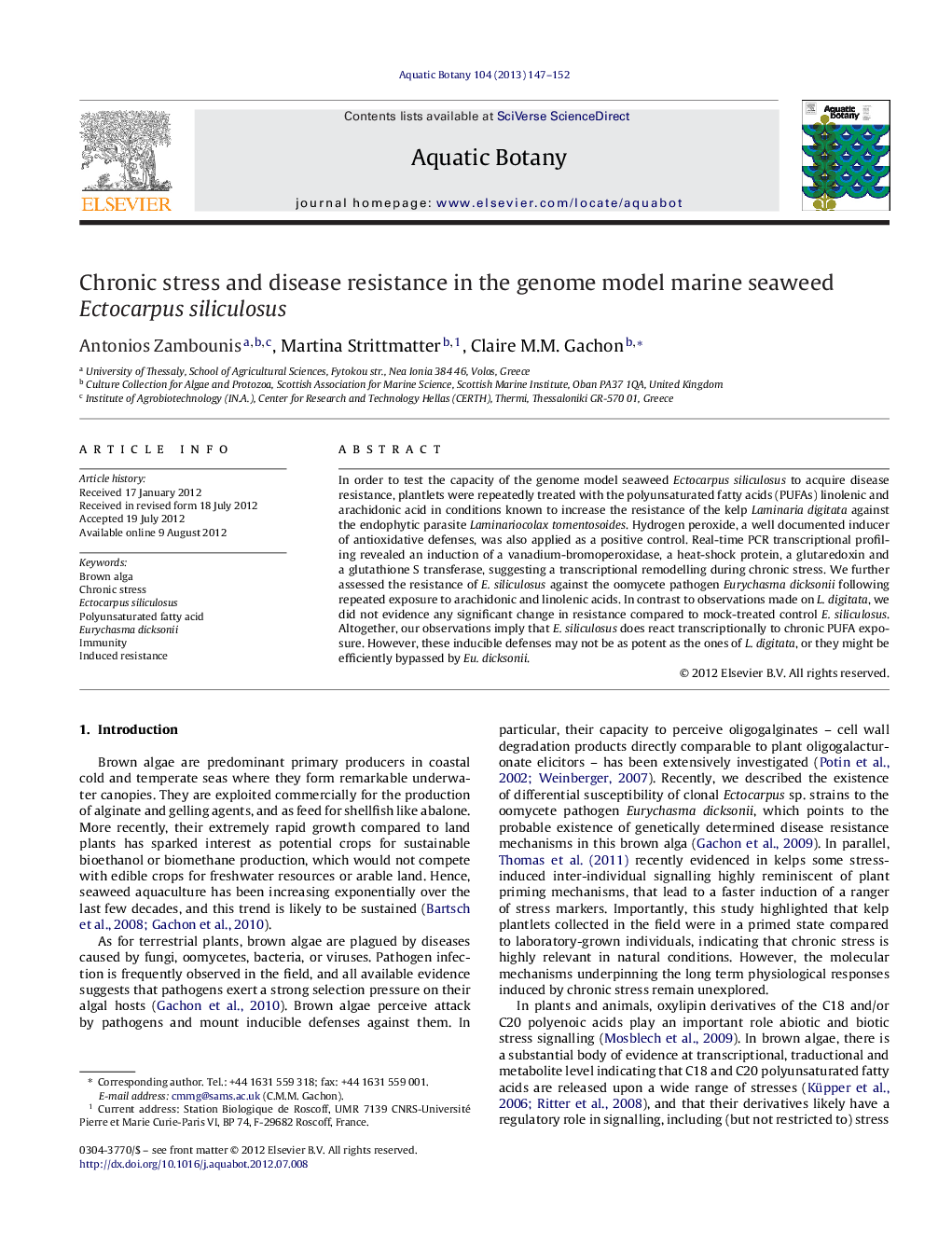| Article ID | Journal | Published Year | Pages | File Type |
|---|---|---|---|---|
| 4527977 | Aquatic Botany | 2013 | 6 Pages |
In order to test the capacity of the genome model seaweed Ectocarpus siliculosus to acquire disease resistance, plantlets were repeatedly treated with the polyunsaturated fatty acids (PUFAs) linolenic and arachidonic acid in conditions known to increase the resistance of the kelp Laminaria digitata against the endophytic parasite Laminariocolax tomentosoides. Hydrogen peroxide, a well documented inducer of antioxidative defenses, was also applied as a positive control. Real-time PCR transcriptional profiling revealed an induction of a vanadium-bromoperoxidase, a heat-shock protein, a glutaredoxin and a glutathione S transferase, suggesting a transcriptional remodelling during chronic stress. We further assessed the resistance of E. siliculosus against the oomycete pathogen Eurychasma dicksonii following repeated exposure to arachidonic and linolenic acids. In contrast to observations made on L. digitata, we did not evidence any significant change in resistance compared to mock-treated control E. siliculosus. Altogether, our observations imply that E. siliculosus does react transcriptionally to chronic PUFA exposure. However, these inducible defenses may not be as potent as the ones of L. digitata, or they might be efficiently bypassed by Eu. dicksonii.
► Diseases of brown algae are ecologically relevant and increasingly important for aquaculture. ► Repeated treatment with polyunsaturated fatty acids induces disease resistance in kelps. ► The same treatment and H2O2 application induce stress marker genes in Ectocarpus. ► However, polyunsaturated fatty acid treatment did not increase disease resistance in Ectocarpus.
